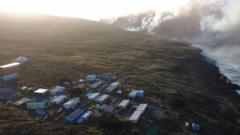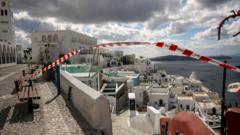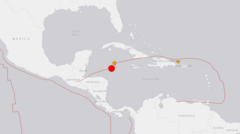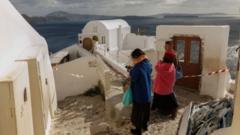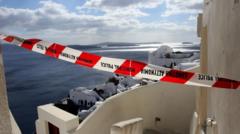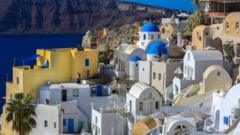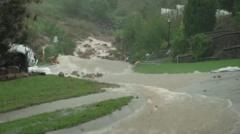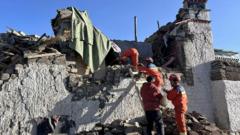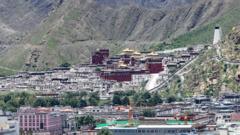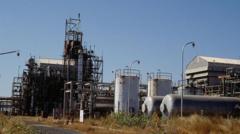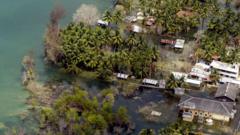**A survivor recounts their experience of the Boxing Day tsunami, the destruction, and the ensuing chaos in the Andaman and Nicobar Islands.**
**Reflections on the Tsunami: Surviving the 2004 Disaster in the Andaman Islands**
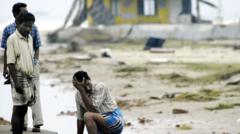
**Reflections on the Tsunami: Surviving the 2004 Disaster in the Andaman Islands**
**A personal account of a near-miss during the devastating tsunami that struck the Indian Ocean region.**
On December 26, 2004, as I prepared for a day of exploration in the scenic Andaman and Nicobar Islands, a powerful earthquake struck. I was aboard a ferry with my family and friends, excitement bubbling in our hearts for the adventure ahead. The vast, tranquil waters of the Indian Ocean provided a stark contrast to the calamity about to unfold. Just as the ferry departed from Port Blair, a violent lurch sent us reeling. The jetty adjacent to us folded and sank into the roiling sea, a prelude to the horror soon to engulf the region.
Unbeknownst to us, a 9.1 magnitude earthquake off the coast of Sumatra triggered one of history’s most lethal tsunamis, wreaking havoc across multiple nations. We remained blissfully unaware of the devastation that had begun only minutes after our departure. The tsunami's wrath was directed at the Andaman and Nicobar Islands — mere kilometers from the quake's epicenter. The towering waves, some reaching heights of 15 meters, claimed lives and obliterated homes, though we only grasped fragments of this unfolding tragedy from the crew's brief updates.
It wasn't until our returning ferry docked in Port Blair hours later, amid immense uncertainty and anxiety, that reality hit us. The harbor bore the scars of nature's fury; damaged infrastructure and crumbled buildings painted a grim picture. As we stepped onto the pier, chaos ensued. People scurried through debris-strewn streets, desperately searching for information about their loved ones, while younger children were quickly sheltered away from the growing crowd.
Over the following weeks, I devoted myself to reporting on this monumental disaster. The islands, primarily accessible by ferry, faced dire challenges as 94% of jetties fell to ruin. Relief efforts were compounded by the logistical nightmare of restoring normalcy in a region still reeling from the shock. My stories unearthed harrowing accounts — families displaced, lost homes, and the haunting memories of survival against all odds.
Among them was a woman from Car Nicobar, who miraculously escaped with her newborn, only to witness the destruction of her entire community around her. Many shared their experiences of waiting in anguish, high above the shoreline, for help that would come too late. With each retelling, the heartbreaking imagery of a flattened landscape riddled with broken lives pierced deeper into the collective psyche.
In Car Nicobar, the memories lingered long after the waters receded. A military officer's somber recounting of uncovering fallen loved ones encapsulated the tragedy: "For every life found, many more vanished in the tide." Regardless of the destruction still surrounding us, a semblance of recovery began — homes would be rebuilt, and memories would be honored.
Even after twenty years, I find myself reflecting on that fateful day. What if our ferry had not left the dock as scheduled? Would I have joined the ranks of those lost to the unrelenting waves? The stories, like the waters of the ocean, ebb and flow, reminding us of how fragile life can be. The tsunami's legacy continues to resonate, not just as a tragedy of loss, but as a resilient testament of survival and the importance of remembering those who did not have the chance to tell their tales.
Unbeknownst to us, a 9.1 magnitude earthquake off the coast of Sumatra triggered one of history’s most lethal tsunamis, wreaking havoc across multiple nations. We remained blissfully unaware of the devastation that had begun only minutes after our departure. The tsunami's wrath was directed at the Andaman and Nicobar Islands — mere kilometers from the quake's epicenter. The towering waves, some reaching heights of 15 meters, claimed lives and obliterated homes, though we only grasped fragments of this unfolding tragedy from the crew's brief updates.
It wasn't until our returning ferry docked in Port Blair hours later, amid immense uncertainty and anxiety, that reality hit us. The harbor bore the scars of nature's fury; damaged infrastructure and crumbled buildings painted a grim picture. As we stepped onto the pier, chaos ensued. People scurried through debris-strewn streets, desperately searching for information about their loved ones, while younger children were quickly sheltered away from the growing crowd.
Over the following weeks, I devoted myself to reporting on this monumental disaster. The islands, primarily accessible by ferry, faced dire challenges as 94% of jetties fell to ruin. Relief efforts were compounded by the logistical nightmare of restoring normalcy in a region still reeling from the shock. My stories unearthed harrowing accounts — families displaced, lost homes, and the haunting memories of survival against all odds.
Among them was a woman from Car Nicobar, who miraculously escaped with her newborn, only to witness the destruction of her entire community around her. Many shared their experiences of waiting in anguish, high above the shoreline, for help that would come too late. With each retelling, the heartbreaking imagery of a flattened landscape riddled with broken lives pierced deeper into the collective psyche.
In Car Nicobar, the memories lingered long after the waters receded. A military officer's somber recounting of uncovering fallen loved ones encapsulated the tragedy: "For every life found, many more vanished in the tide." Regardless of the destruction still surrounding us, a semblance of recovery began — homes would be rebuilt, and memories would be honored.
Even after twenty years, I find myself reflecting on that fateful day. What if our ferry had not left the dock as scheduled? Would I have joined the ranks of those lost to the unrelenting waves? The stories, like the waters of the ocean, ebb and flow, reminding us of how fragile life can be. The tsunami's legacy continues to resonate, not just as a tragedy of loss, but as a resilient testament of survival and the importance of remembering those who did not have the chance to tell their tales.


